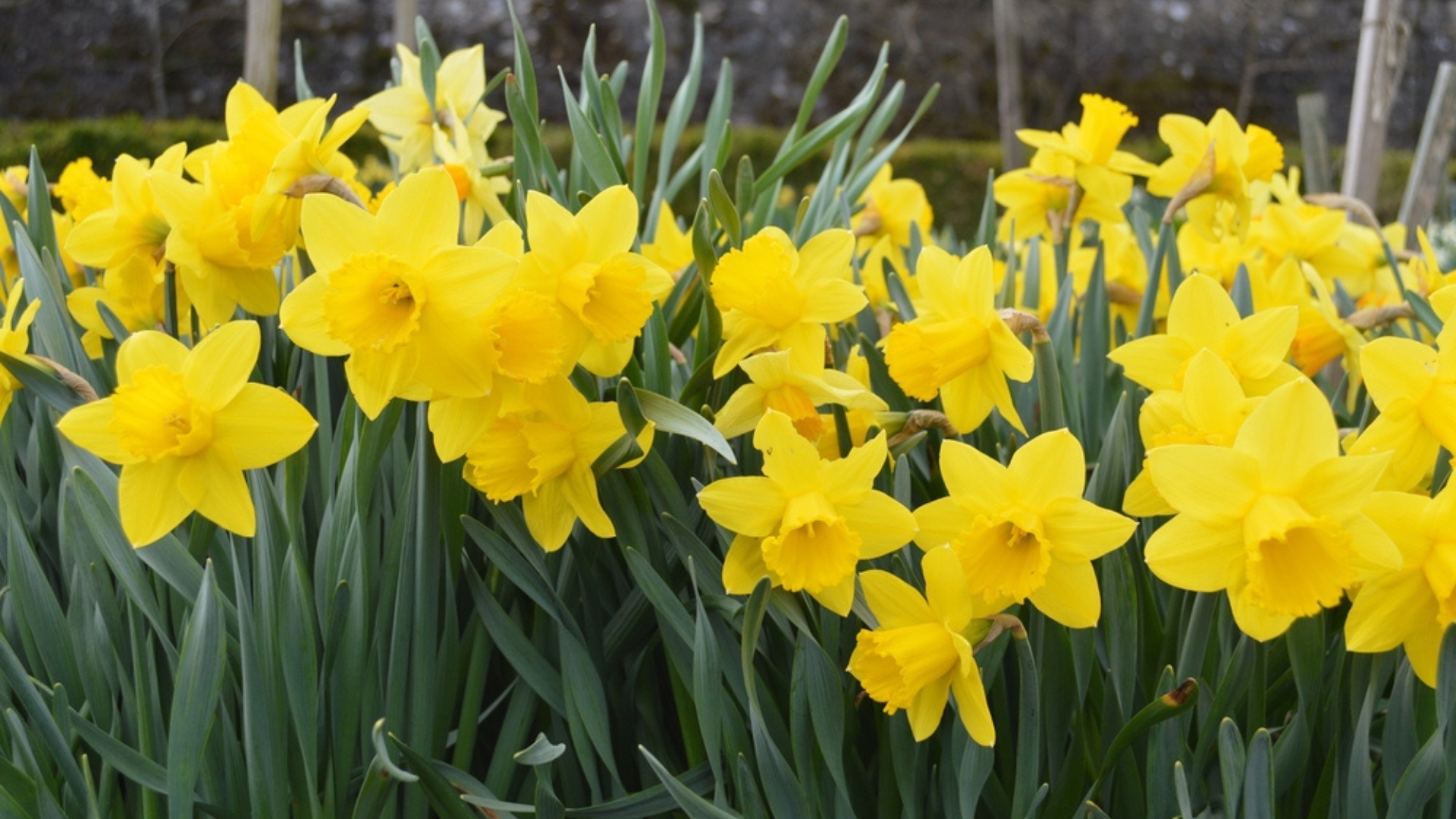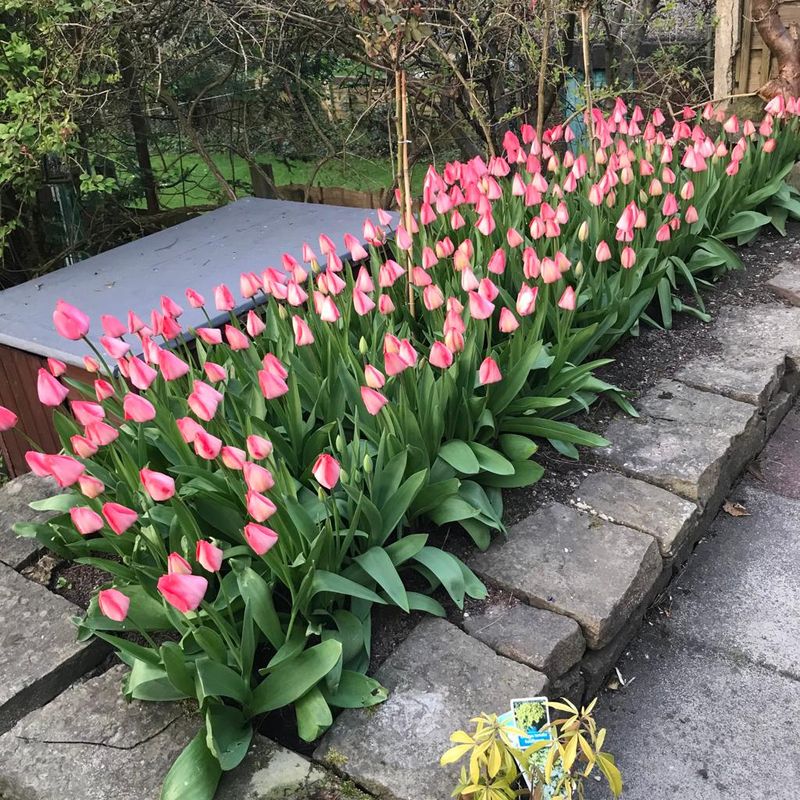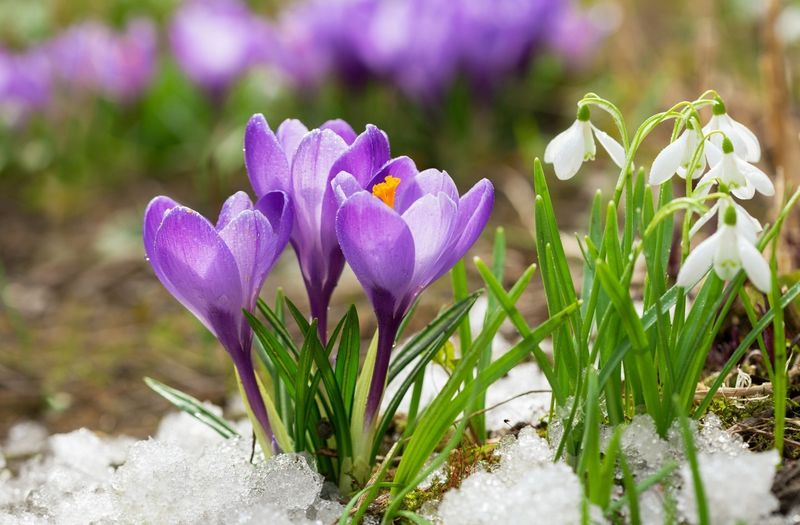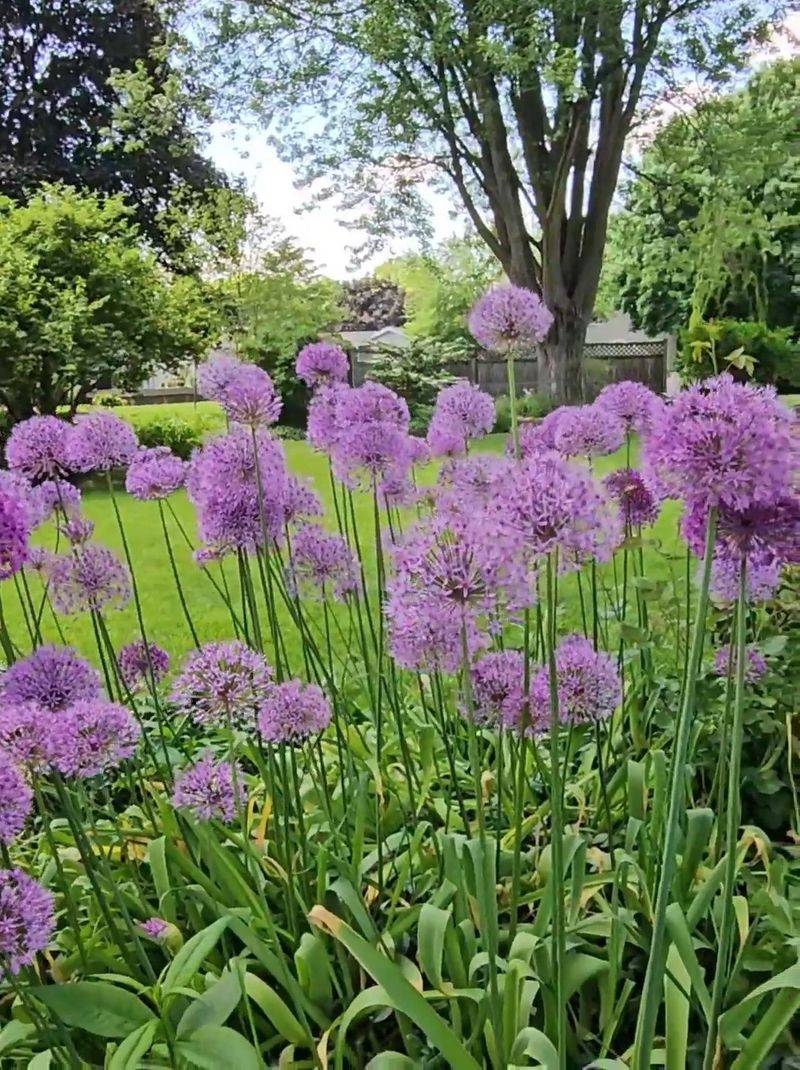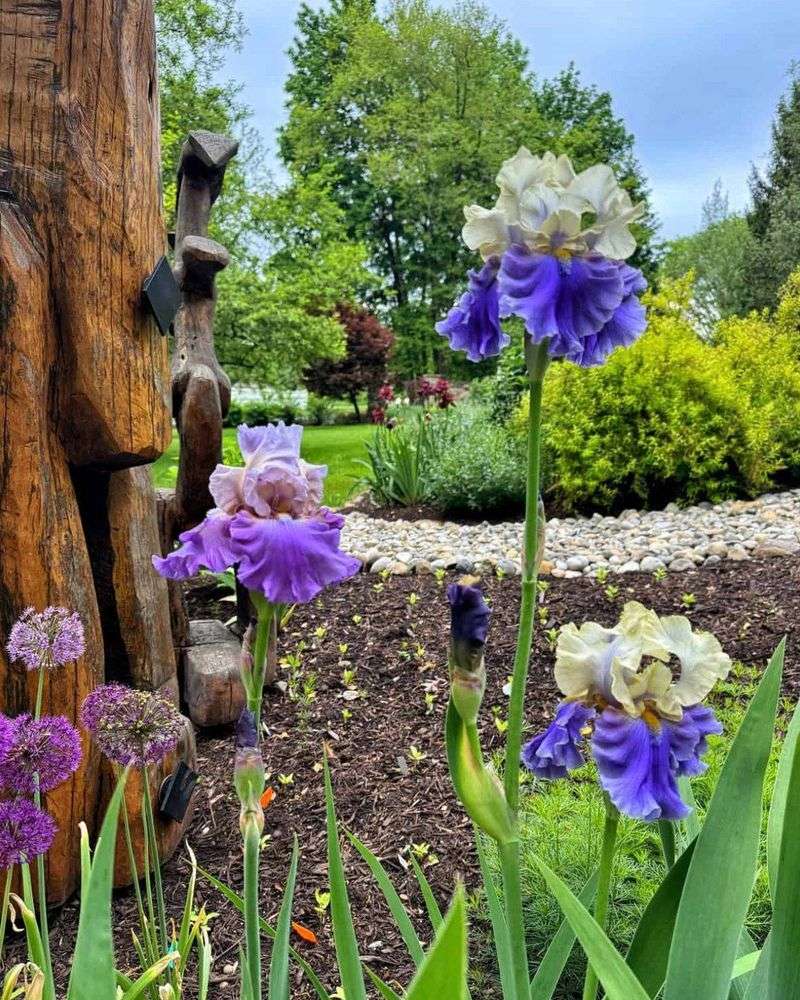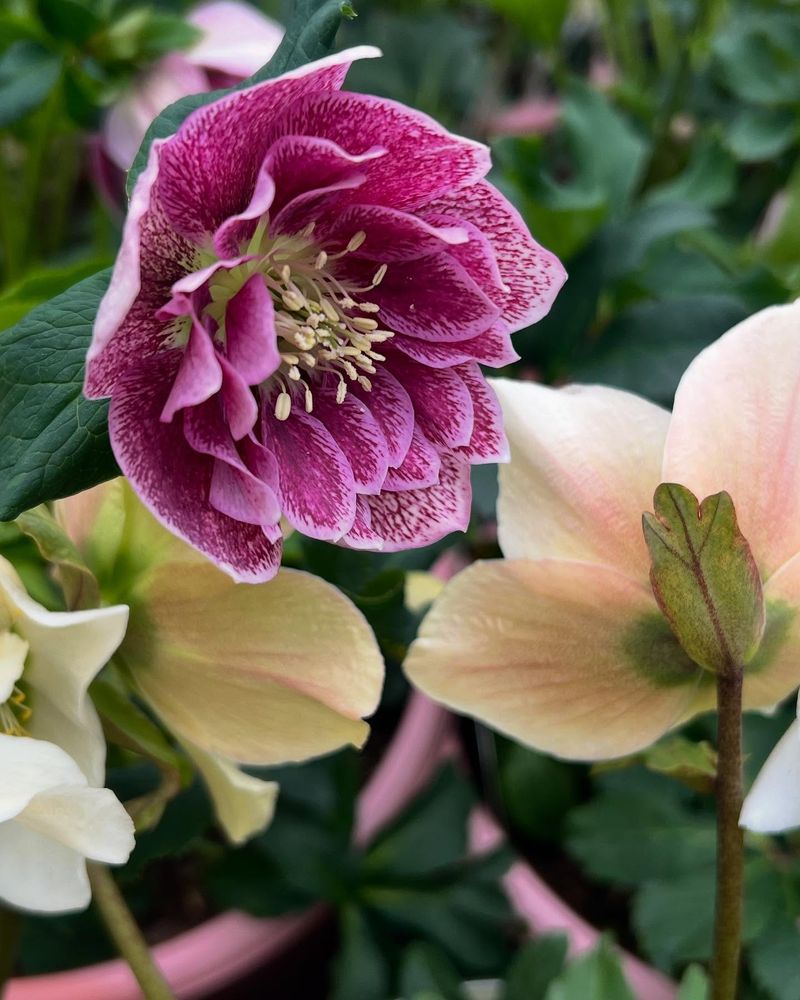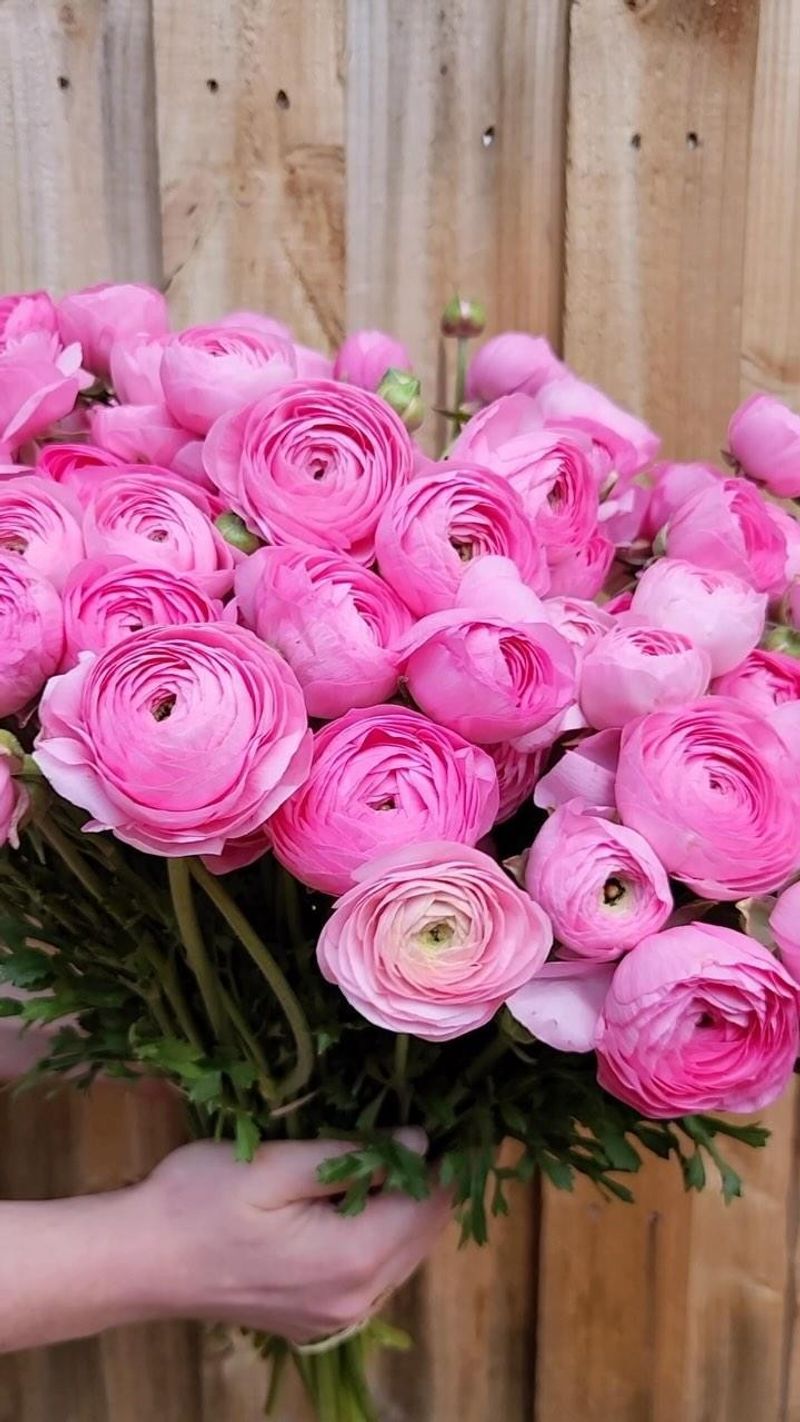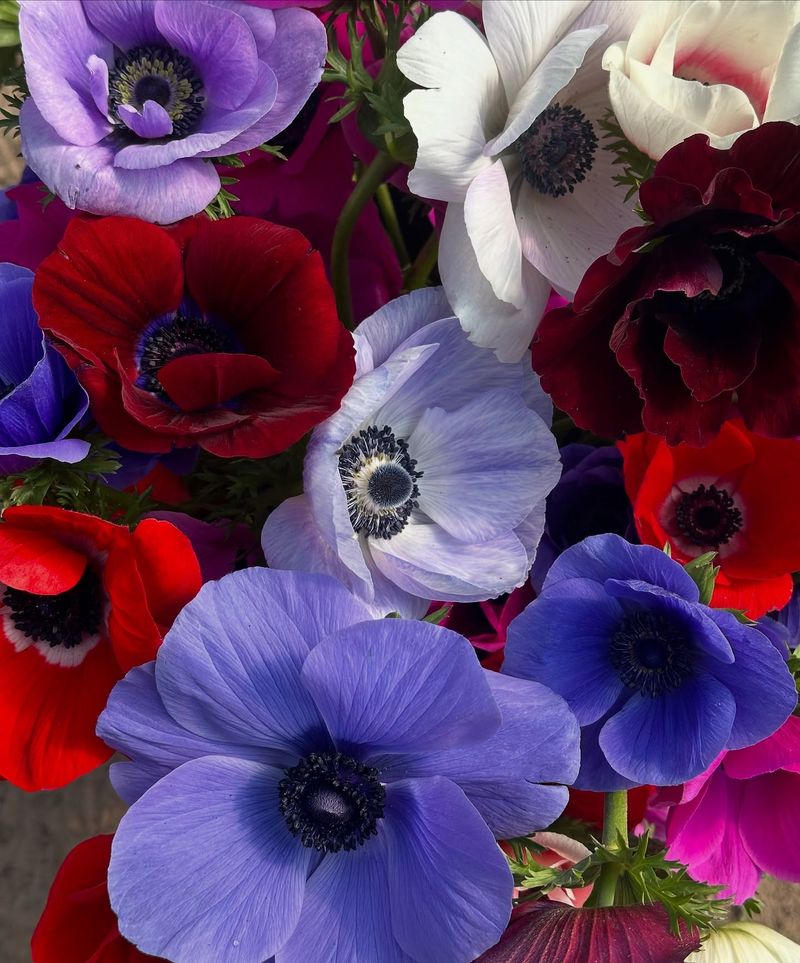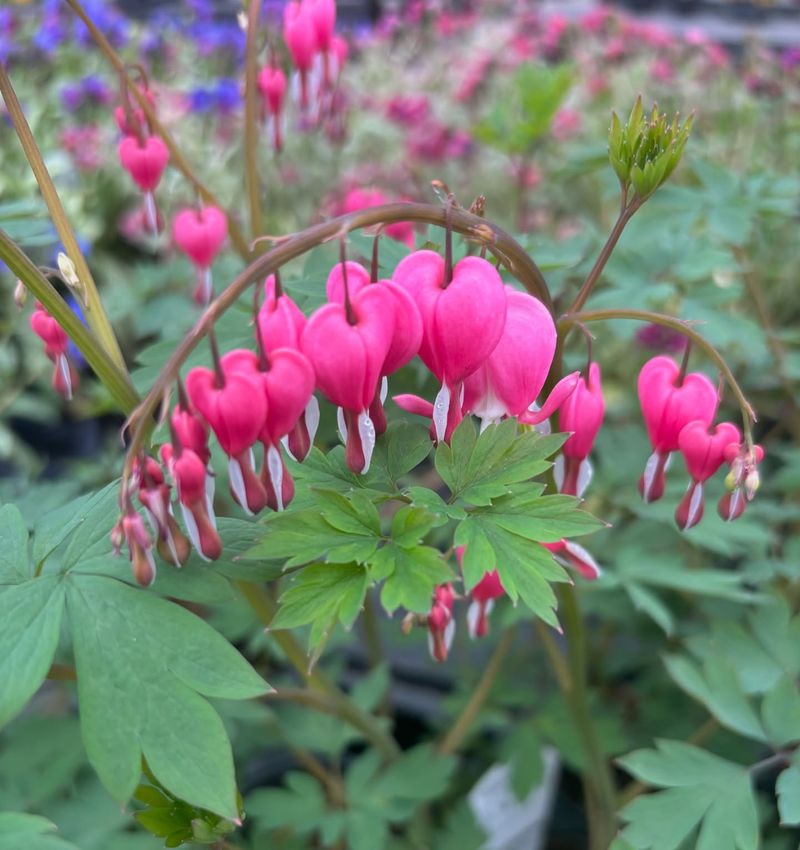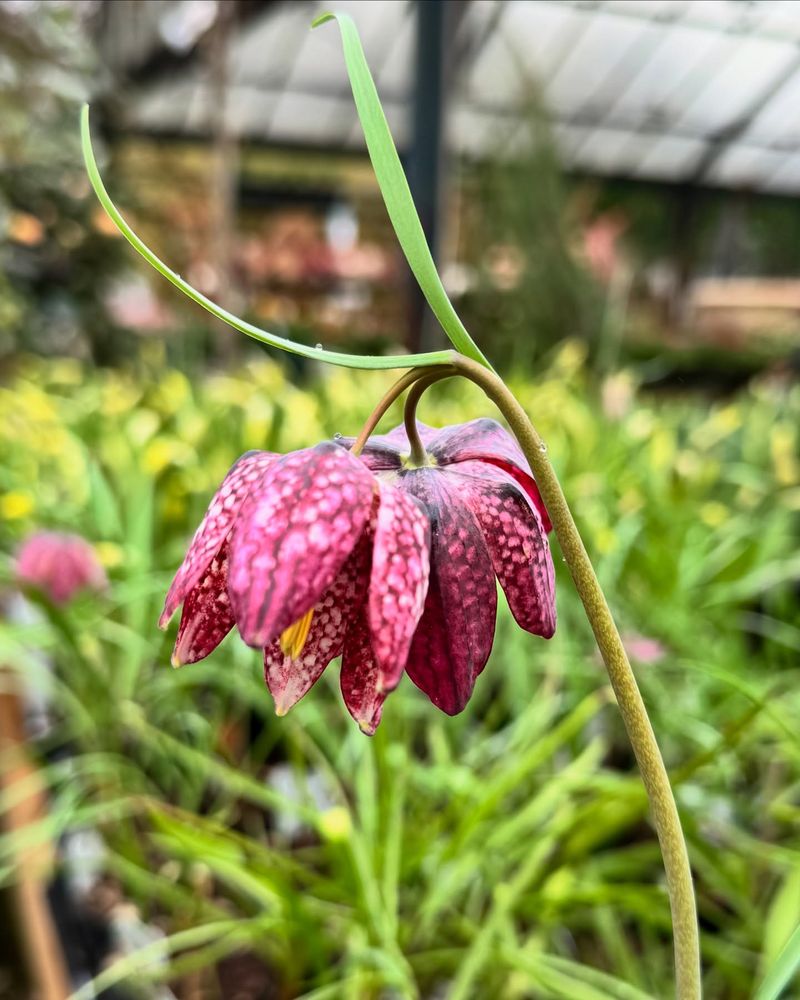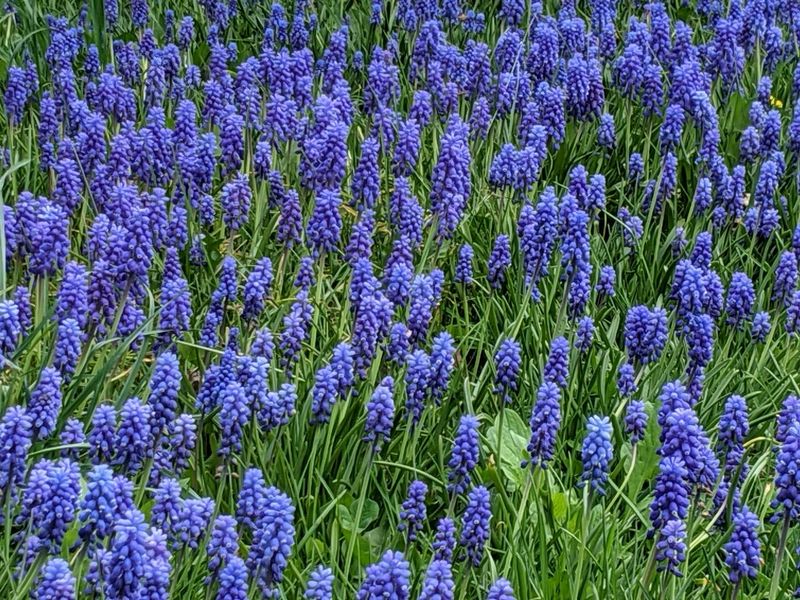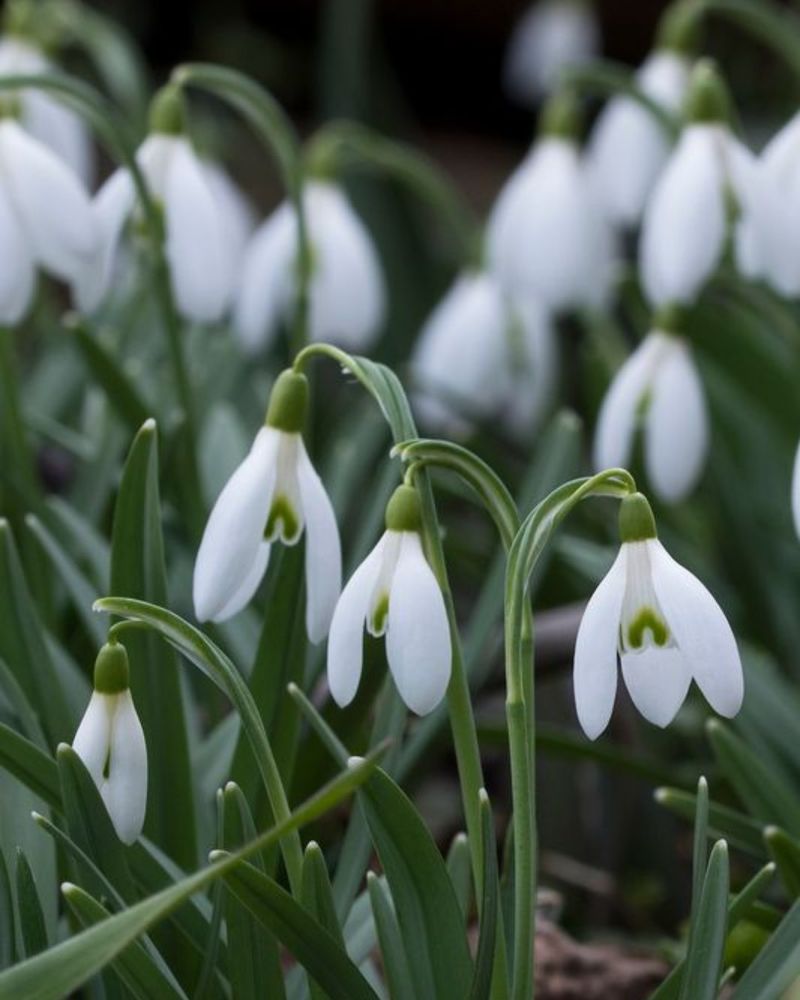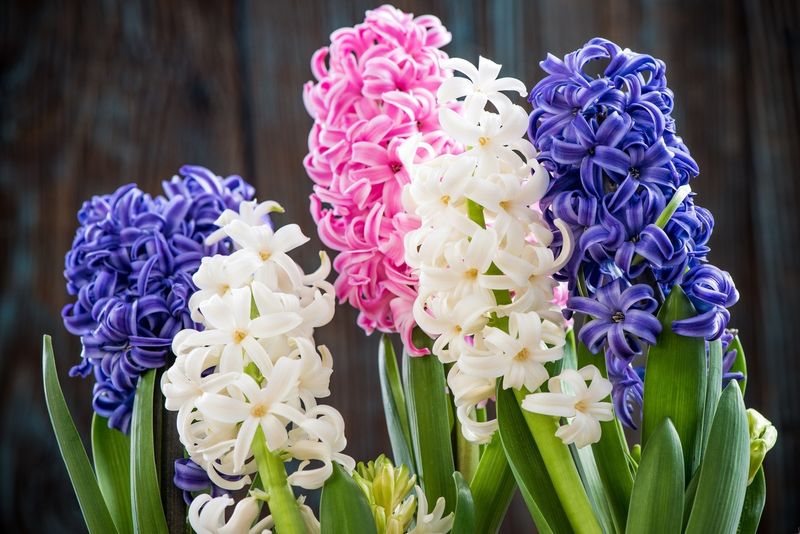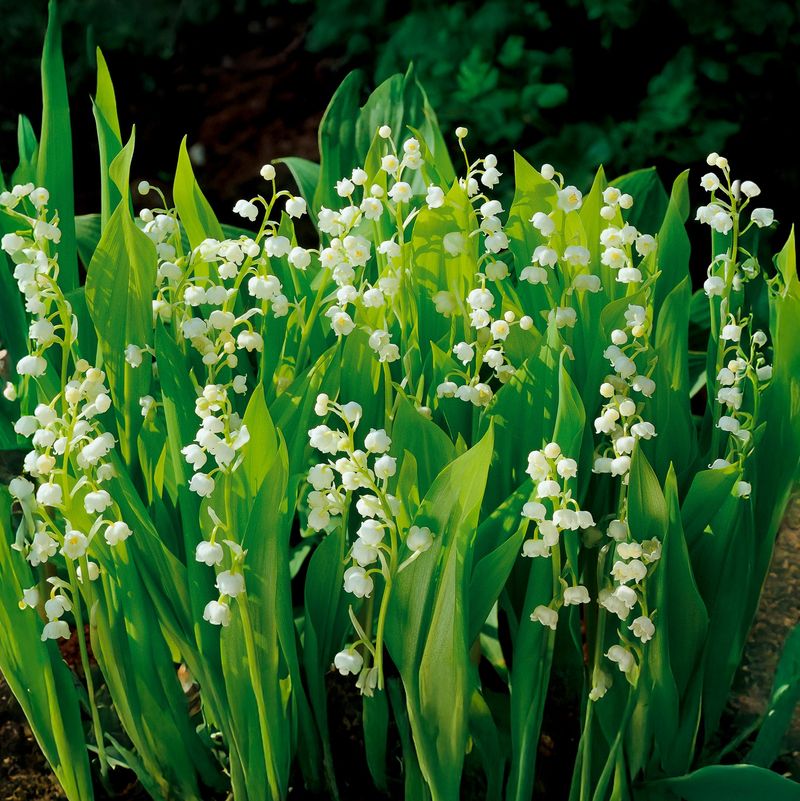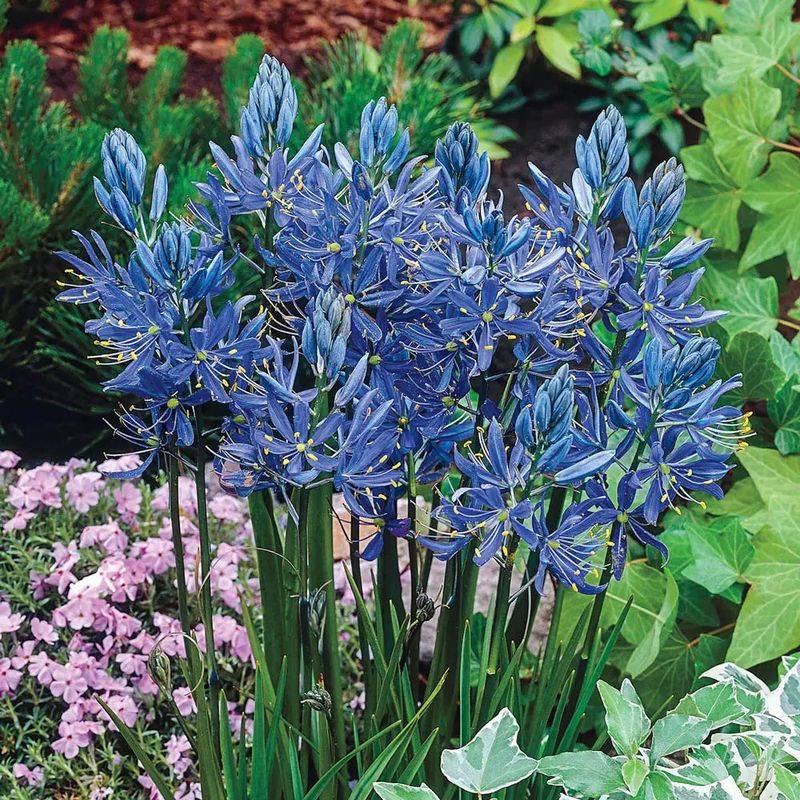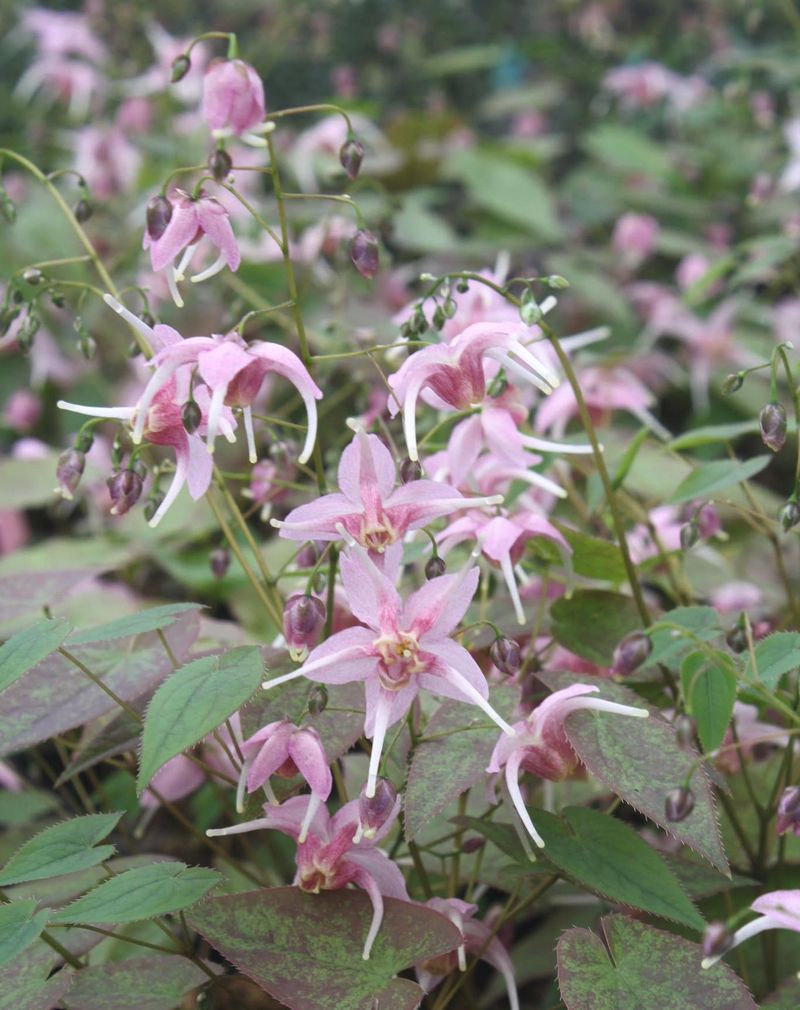Looking for something different to brighten up your garden this year? While daffodils are popular spring bloomers, many gardeners crave variety and new visual experiences. Expanding your plant palette can transform your outdoor space with different colors, textures, and blooming seasons that might better suit your garden style or climate.
1. Tulips
Imagine a sea of vibrant cups dancing in the spring breeze! Tulips offer an incredible range of colors from pure white to nearly black, with every shade between. They’re just as easy to grow as daffodils but provide more variety in petal shapes.
Plant bulbs in fall about 6 inches deep in well-draining soil. For dramatic impact, group at least 12 bulbs of the same variety together. Unlike daffodils, many tulip varieties benefit from being lifted and stored during summer months.
The beloved Darwin hybrids return reliably year after year, making them perfect for gardeners who want low-maintenance beauty.
2. Crocuses
These cheerful harbingers of spring often poke through late winter snow, bringing welcome color when the landscape is still sleepy. Their delicate, goblet-shaped blooms in purples, whites, and yellows create magical carpets when planted en masse.
Crocus bulbs (technically corms) should be planted in fall about 3 inches deep. They naturalize easily, multiplying year after year with virtually no care required. Plus, they finish blooming before you need to mow, making them perfect for lawns.
Bonus for wildlife lovers: their early blooms provide crucial nectar for bees emerging from winter hibernation.
3. Alliums
With their perfect spheres of tiny star-shaped flowers perched atop tall stems, alliums bring architectural drama to any garden. The purple globes seem to float above other plants, creating a magical effect especially at sunset.
Fall-planted bulbs require minimal care and deer typically avoid them thanks to their oniony scent. Heights range from tiny 6-inch varieties to the spectacular 4-foot Globemaster with softball-sized flower heads.
After blooming, the dried seed heads continue to add interest throughout summer and fall. For maximum impact, plant in groups of at least seven bulbs among perennials that will hide their fading foliage.
4. Irises
Elegant and regal, irises bring sophisticated beauty with their intricate blooms. Their sword-like foliage adds vertical interest even when they’re not flowering, making them true garden workhorses.
Bearded irises, with their fuzzy “beards” on the falls (lower petals), offer the widest color range including true blues—something daffodils can’t claim. Siberian and Japanese varieties thrive in moist conditions where other bulbs might rot.
Plant rhizomes just below the soil surface in late summer to early fall. Unlike daffodils, many irises prefer their “shoulders” exposed to sunlight for best blooming. Divide clumps every 3-4 years to maintain vigor.
5. Peonies
Peonies are the quintessential romantic flowers with their lush, ruffled blooms and intoxicating fragrance. Once established, these long-lived perennials can thrive for decades with minimal care, becoming family heirlooms passed down through generations.
Plant the tuberous roots in fall with eyes (growth buds) just 1-2 inches below soil level. They prefer not to be disturbed, so choose their location carefully. Though they bloom for only about two weeks each year, their glossy foliage remains attractive all season.
For extended enjoyment, cut flowers when they’re still in tight bud stage and they’ll open indoors, lasting about a week in arrangements.
6. Hellebores
Known as Lenten roses, hellebores are woodland wonders that bloom when almost nothing else dares—from late winter through early spring. Their nodding, cup-shaped flowers in shades of white, pink, purple, and green last for months, not weeks.
Unlike daffodils, hellebores are true perennials, not bulbs. Their evergreen foliage provides year-round structure in shady borders. Plant them where they can be appreciated up-close, perhaps along a walkway or near an entrance.
Modern varieties with upward-facing blooms make it easier to appreciate their often speckled interiors. They self-seed readily, creating charming colonies that expand yearly with virtually no effort on your part.
7. Ranunculus
Few flowers can match the pure romance of ranunculus with their paper-thin petals arranged in perfect spirals. Available in nearly every color except true blue, these rose-like blooms make exceptional cut flowers that last up to two weeks in a vase.
Plant corms (similar to bulbs) in fall for mild-winter regions or early spring in colder zones. The tubers look like tiny octopuses with finger-like projections—plant these “fingers” pointing downward about 2 inches deep.
While not as hardy as daffodils in cold climates, ranunculus offer incomparable elegance. In zones 7 and colder, treat them as annuals or dig up the corms after foliage yellows for replanting next season.
8. Anemones
Spring-blooming anemones captivate with their simple, daisy-like flowers centered around dramatic black button eyes. The jewel-toned petals—especially the electric blues and deep reds—create striking focal points in spring gardens when paired with complementary bulbs.
Plant the odd-looking, wrinkled corms in fall after soaking them overnight to jump-start growth. About 2 inches deep in well-draining soil is perfect. They prefer cool temperatures and will go dormant during summer heat.
For continuous blooms from spring through fall, complement these with their taller cousins, the fall-blooming Japanese anemones. Both types make excellent cut flowers that bring a touch of woodland charm to arrangements.
9. Bleeding Hearts
Perfectly named, bleeding hearts dangle rows of heart-shaped pink or white blooms along arching stems. Their fernlike foliage creates a soft, woodland feel in dappled shade where many sun-loving bulbs struggle.
Unlike daffodils, these are true perennials growing from root systems rather than bulbs. Plant them in spring or fall in rich, moist soil. The traditional pink variety (Dicentra spectabilis) can reach 3 feet tall and wide, creating dramatic presence.
Don’t panic when they disappear in summer—bleeding hearts naturally go dormant in heat. Plant late-emerging perennials nearby to fill the gap. The newer ‘Valentine’ variety offers deeper red hearts against darker foliage for modern gardens.
10. Fritillaria
With their unusual checkered patterns and nodding bell-shaped blooms, fritillaries bring whimsical charm to spring gardens. The petite Fritillaria meleagris (snake’s head fritillary) features distinctive purple and white checkered patterns like tiny chess pieces dancing in the breeze.
For dramatic impact, try the crown imperial fritillary with its cluster of bell-shaped flowers topped by a tuft of leaves resembling a royal crown. Plant bulbs in fall about 6 inches deep in well-draining soil.
As a bonus, fritillaries naturally repel garden pests including mice, voles, and deer. The bulbs contain compounds that rodents find distasteful, making them excellent companions for other spring bulbs that might otherwise become animal snacks.
11. Muscari
Commonly called grape hyacinths, these diminutive charmers create rivers of blue when planted en masse. Their tight clusters of tiny, beadlike flowers resemble miniature bunches of grapes perched atop slender stems.
Fall-planted bulbs naturalize readily, forming expanding colonies each year with zero effort. They’re perfect for rock gardens, border edges, or tucked between larger perennials. Try pairing them with contrasting yellow or white flowers for eye-catching combinations.
Beyond the familiar cobalt blue, muscari come in sky blue, white, and unusual bi-colors. For maximum impact, plant at least 50 bulbs in sweeping drifts rather than formal rows. Their grassy foliage emerges in fall, marking where spring beauty will appear.
12. Snowdrops
Brave little snowdrops often push through frozen ground while winter still has a firm grip, sometimes as early as January. Their dainty white bells, often marked with green, hang from thread-thin stems just 4-6 inches tall.
Plant the small bulbs in fall, about 3 inches deep and 3 inches apart. Unlike many spring bulbs, snowdrops prefer being planted “in the green”—right after flowering while foliage is still present. This establishment method yields quicker colonies.
True snowdrop enthusiasts (called galanthophiles) collect numerous varieties that vary subtly in height, bloom time, and green markings. These resilient flowers multiply reliably year after year, eventually forming impressive carpets throughout woodland gardens.
13. Hyacinths
Few spring flowers can match hyacinths for pure sensory delight. Their intensely fragrant blooms fill gardens with sweet perfume while their densely packed florets create solid spikes of color in jewel-like purples, pinks, blues, and whites.
Plant bulbs in fall about 6 inches deep and 6 inches apart. For indoor enjoyment, force them in water using special hyacinth glasses or plant in pots and refrigerate for 8-10 weeks before bringing into warmth.
While hyacinths may not naturalize as readily as daffodils, their unmatched fragrance makes them worth replanting. The loose-flowered multi-stem varieties (sometimes called Roman hyacinths) often perform better in subsequent years than the dense Dutch types.
14. Lily of the Valley
Dainty bells of pure white lily of the valley bring woodland magic and incomparable fragrance to shady spots. These old-fashioned favorites spread by underground rhizomes, eventually forming luxurious groundcover in areas where many plants struggle.
Plant the small rhizomes called “pips” in early spring about 1 inch deep. They prefer rich, moist soil and dappled shade. While slow to establish, they’re worth the wait—patient gardeners are rewarded with decades of reliable blooms.
Beyond their beauty, lily of the valley carries rich symbolism representing the return of happiness and good luck in many cultures. Their cut stems last surprisingly well in small bud vases, bringing their heavenly scent indoors.
15. Camassia
North American native camassia creates spectacular spires of star-shaped flowers in shades of blue, purple, or white. Growing 2-3 feet tall, these stunning bulbs thrive in conditions where many others fail—particularly in heavy, damp soils.
Plant bulbs in fall about 4 inches deep and 6-8 inches apart. Unlike daffodils that need well-draining conditions, camassia actually enjoys moisture and can handle clay soils or areas that remain damp in spring.
Native Americans historically harvested camassia bulbs as an important food source, roasting them like sweet potatoes. In gardens, they create dramatic vertical elements that pair beautifully with later-blooming perennials. Their grassy foliage remains attractive as it ripens, unlike some bulbs.
16. Epimedium
Epimediums, affectionately called fairy wings or bishop’s hats, feature delicate, dancing blooms hovering above heart-shaped foliage. These shade-loving perennials offer both spring flowers and often semi-evergreen or colorful autumn foliage.
Unlike bulbs, these grow from slowly expanding rhizomes. Plant in spring or fall, keeping the crown at soil level. They excel in dry shade—those challenging spots under trees where many plants struggle. Their drought tolerance once established makes them practically maintenance-free.
The intricate flowers in yellows, whites, pinks, or purples resemble tiny columbines or dancing sprites. After flowering, their leathery leaves form attractive groundcover, effectively suppressing weeds while adding textural interest to woodland gardens year-round.
17. Scilla
Scilla creates breathtaking blue carpets in early spring, with star-shaped flowers that catch sunlight like sapphires. The most common variety, Scilla siberica, stands just 4-6 inches tall but makes an outsized impact when planted in drifts.
Fall-planted bulbs multiply rapidly both by bulb offsets and self-seeding. Within a few years, they’ll form impressive sweeps of color. They’re perfect for naturalizing in lawns, under deciduous trees, or at woodland edges.
For maximum visual impact, pair blue scilla with contrasting yellow early daffodils or white snowdrops. Their grassy foliage vanishes by early summer, making them compatible with lawns. Plant at least 25 bulbs in each grouping for the best display.
18. Trillium
Woodland treasures with unmistakable three-petaled flowers, trilliums bring native elegance to shady gardens. These long-lived perennials emerge in early spring with three leaves and a single perfect bloom in white, pink, red, or yellow depending on species.
Purchase nursery-propagated plants rather than wild-collected ones, as trilliums grow extremely slowly from seed. Plant rhizomes just below soil level in fall or spring. They prefer rich, moist, acidic soil with plenty of leaf mold.
Patient gardeners are rewarded with colonies that expand gradually over decades. The white large-flowered trillium (T. grandiflorum) turns pink as it ages, creating a beautiful progression throughout its blooming period. These native gems support local ecosystems while adding sophisticated beauty.
19. Erythronium
Often called trout lilies or dog-tooth violets, erythroniums feature elegant nodding blooms with reflexed petals above mottled foliage. These woodland natives bring refined beauty to spring gardens with their lily-like flowers in yellows, whites, pinks, or purples.
Plant bulbs in fall about 4 inches deep in humus-rich soil. They prefer dappled shade and consistent moisture during their growing season. The attractive mottled leaves, often speckled like a trout’s back, emerge first, followed by the graceful blooms.
Many species are North American natives that support local pollinators. Once established, they form slowly expanding colonies that require no special care. Their foliage disappears by midsummer as plants go dormant, making them perfect companions for later-emerging perennials.

